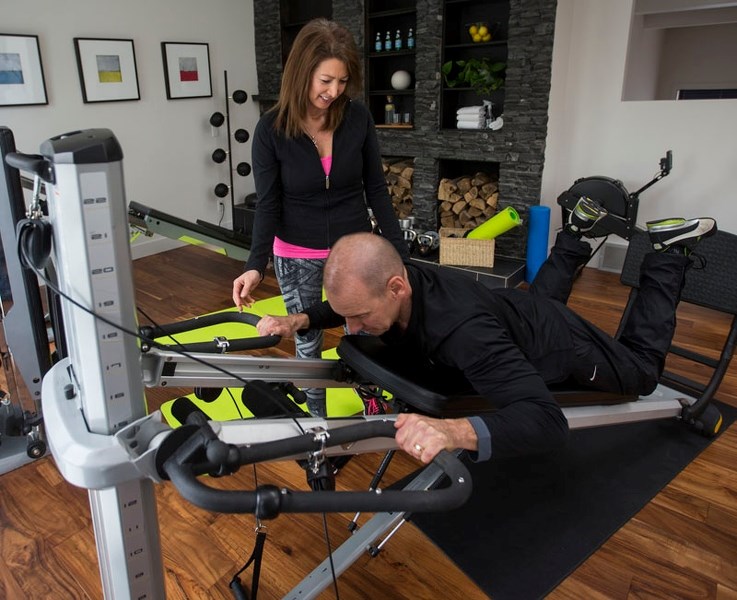Walking through the doors of your fitness centre can be more than a little overwhelming.
Rows upon rows of mirrors create the optical illusion that a host of sweaty guys in bro tanks and girls who could probably bench you are disapprovingly watching as you fumble with the complex, pulleyed contraption meant to work out muscles you didn’t even know you had. (What is a lat and why do you need it anyway?)
While the stares are (mostly) in your head, it’s no wonder so many – 50 per cent to be exact – of new gym members struggle to get past their first six months of working out.
A St. Albert couple believes that a more holistic approach to fitness will keep individuals motivated enough to incorporate exercise into their routine year-long, not only in January after they make, and subsequently break, their New Year’s resolutions.
Paul Robinson and Monica Kneifel Robinson, owners of KR Personal Training, a new boutique fitness studio, recently moved to St. Albert from Ontario, where they accumulated 25 years of experience in the fitness field.
For Robinson those years were spent at the YMCA, which he said took a rather traditional approach to setting up their amenities.
“We always took the same approach that all other gyms would take: we bought a bunch of really cool equipment and we’d put them in really big rooms. What we were finding was, and this is traditional for YMCAs, Worlds and GoodLifes, 100 people would come in and 50 of them would leave,” he said.
Research from the U.S. by Dr. James Annesi, who is now director of wellness advancement for the YMCA, showed that gyms needed to start helping individuals change their behaviours, rather than showing them how to use their equipment. That is when Robinson started to adopt a new approach.
Around this time, Kneifel Robinson started opening boutique fitness studios that far surpassed the 70 per cent retention rates the YMCA began seeing after integrating group personal training, where individuals learned about resistance and how to train different muscle groups as an introduction to the gym setting.
“What we found was that a lot of individuals are very hesitant in going to the gym. They’re nervous about going into the gym; they feel they need to get into shape before they can even join a gym,” she said.
These “gym-phobic” individuals appreciated the intimate setting of Kneifel Robinson’s studios, which saw revolving door clientele drop to a mere 10 per cent.
“When we train individuals here, we’re focused on them; they’re focused on themselves. They’re not worried about all the background noise: am I looking right? Am I doing what I should be? All those fears that people have when they go into a gym,” said Kneifel Robinson.
So when the couple made the move to Alberta, where 40 per cent of the population fail to engage in the recommended 150 minutes of physical activity per week, Robinson decided that smaller was better, entering the boutique fitness market alongside his wife.
Boutique fitness studios have been popping up all over the Edmonton region in the last few years, said Katherine MacKeigan, director of Alberta Fitness Leadership Certification Association.
The area is peppered with numerous cycling studios. In St. Albert, Orange Theory’s heart-rate-based interval training and Sculpt Barre’s mix of mat exercises, free weights and dance elements count among the city’s different niche, micro-sized studios.
Tara-Leigh McHugh, an associate professor in the Faculty of Physical Education and Recreation at the University of Alberta, says the rise of the boutique and micro fitness studio doesn’t surprise her.
“I think if we look at how some of these newer studios are being designed – less mirrors for example, smaller spaces where there’s less opportunity for other people to view your body when engaging in such activities, maybe the lighting can be different,” she said about why these smaller studios might be more attractive to some women.




